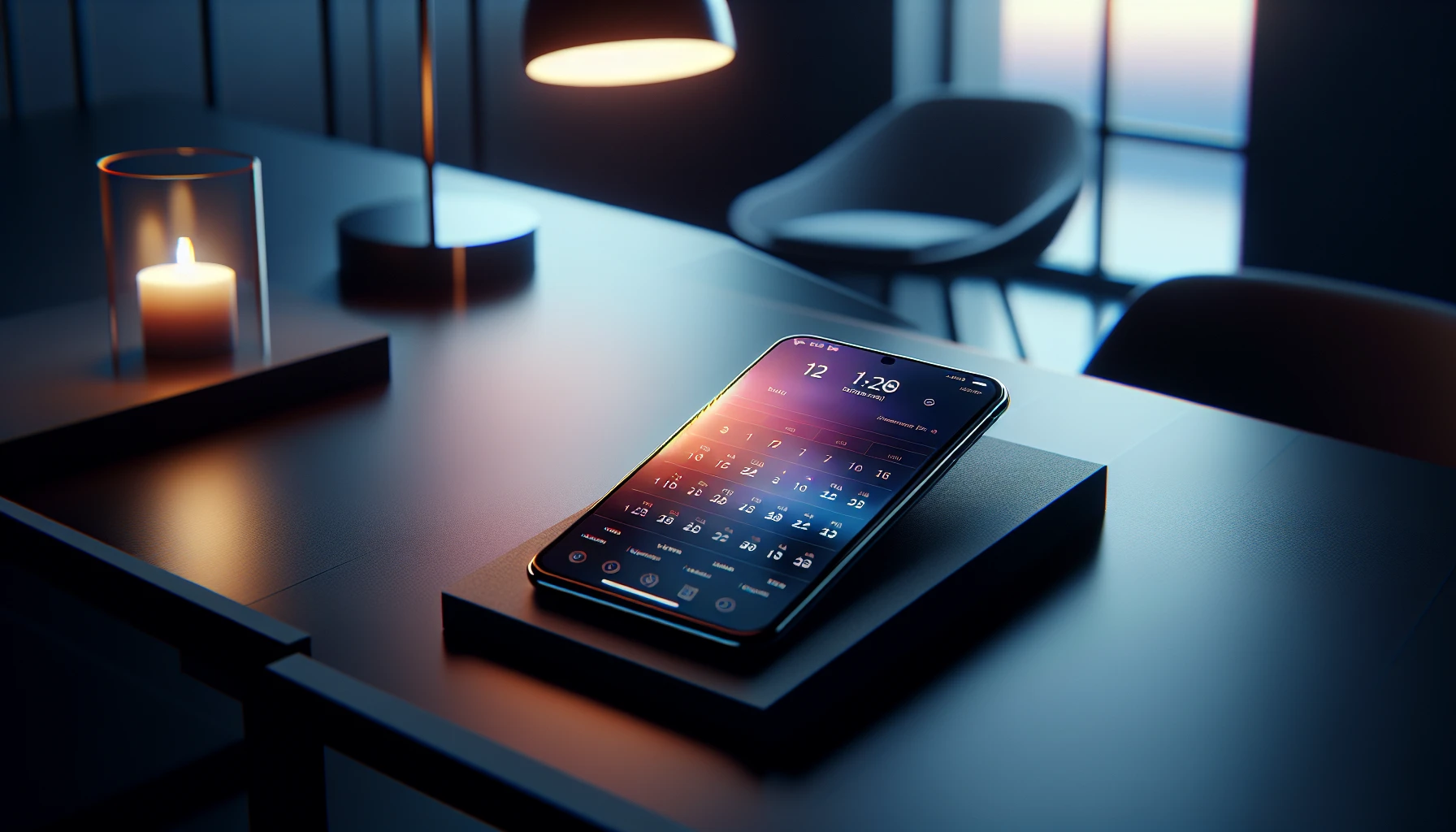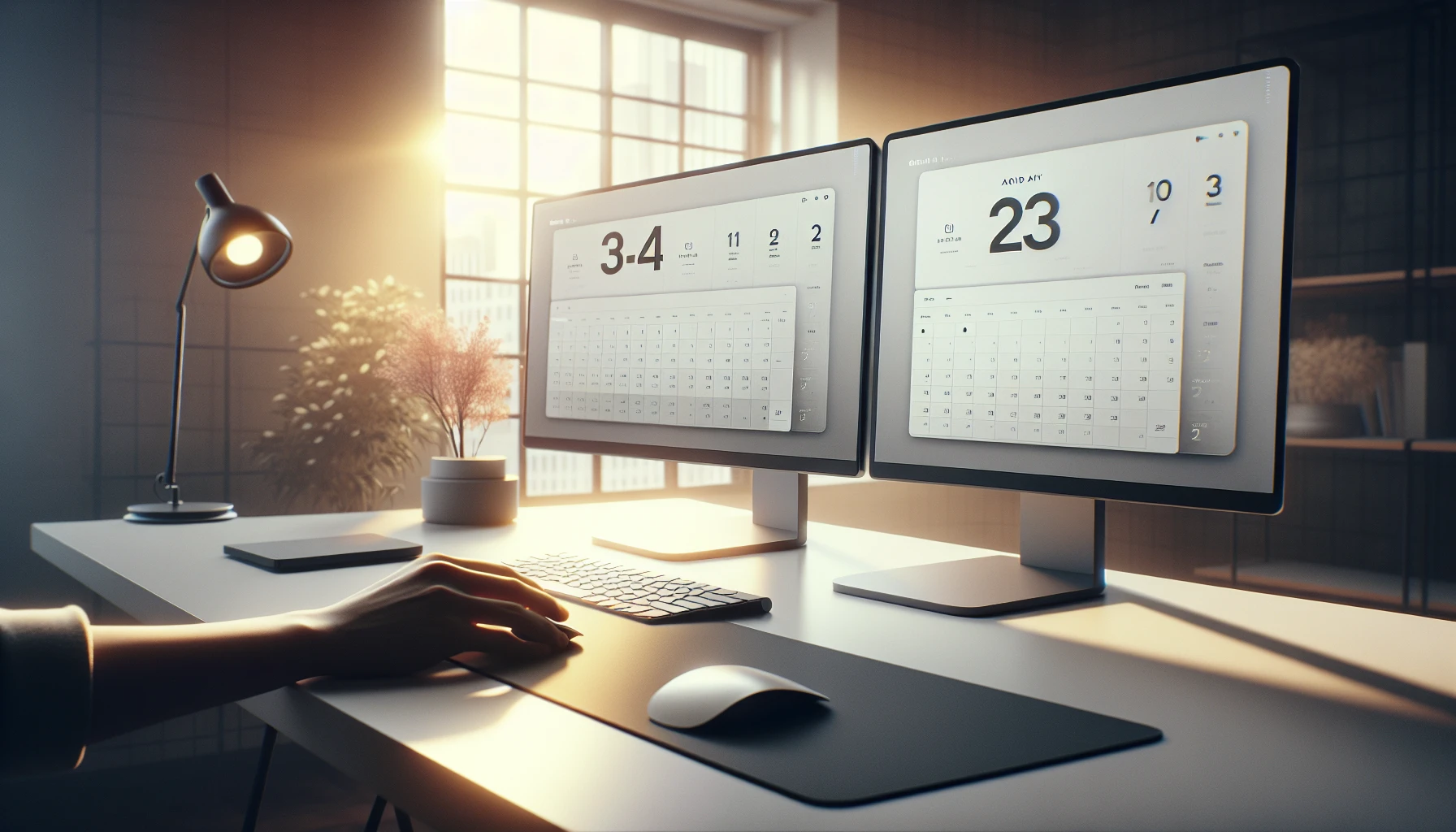· Ricardo Batista · 13 min read
Google Calendar Dark Mode - easy steps to switch styles
Google Calendar dark mode reboots design with a fresh UI and basic settings for Gmail and workspace, a neat, slightly off twist overall.

Google Calendar dark mode refreshes the look by combining better design with easy integration, making daily planning a bit smoother and more fun though sometimes a few small glitches appear. Explore how the new interface mixes updated design cues and tool settings to offer a unique schedule experience with simple tips and tricks that create a different vibe.
Key Takeaways
- It’s easy to switch Google Calendar to dark mode for a better viewing experience
- The integration with Gmail and Google Workspace makes for seamless use
- We excel at automatically pinging attendees who arrive late to your meetings
- Customization options through simple CSS tweaks and third-party tools enhance your setup
- Continuous user feedback drives improvements in usability and overall performance
Google Calendar Dark Mode Overview
Google Calendar dark mode comes as part of a refreshed user interface that embraces Material 3 design. With a cleaner and more modern appearance, the new dark mode isn’t just an aesthetic change—it promises to reduce eye strain and improve battery life on OLED screens. This update is integrated carefully with appearance settings, giving users a choice between the classic light mode and the newly refined dark mode. For those who use meeting reminders, the clear visual design helps in easily spotting notifications, making it simple to automatically ping the attendees who show up late to meetings.
The dark mode update is designed with a straightforward approach. The settings menu now includes an option for dark mode, along with other appearance tweaks that let you choose your preferred color scheme. It’s built on Material 3 standards, which means you’ll see more rounded corners, consistent typography, and an overall modern look that blends well with the current trends in design. The refreshed UI was rolled out after intensive testing and input from the community, making it clear that user feedback is a big part of Google’s design process.
For many users, the ability to toggle between these modes on the fly has been a clear win. The streamlined user interface makes it easier to navigate large calendars, coordinate meeting reminders, and manage event details without getting lost in menus or being overwhelmed by too many options. When meeting reminders are set to automatically notify latecomers, the dark mode background enhances the legibility of these alerts against softer hues, ensuring that no notification is missed.
User Interface Updates and Integration
The updates extend beyond personal Gmail accounts to encompass Google Workspace accounts as well. The rollout now includes improved integration with Google Tasks, which means that your to-do lists and deadlines can display consistently across different Google apps. If you use dark mode on your Google Calendar, those subtle cues in color and contrast help ensure that reminders—like those for meeting attendees arriving late—stand out clearly against the background.
New Appearance Settings for Both Personal and Professional Platforms
Google has carefully crafted the dark mode in a way that fits both personal and professional use cases. With Gmail, Google Calendar, and Google Tasks now sharing a more unified design language, users can expect a more harmonious experience when switching between these tools. For people who rely heavily on meeting reminders to manage their schedules, this seamless integration means that not only are reminders clear, but the overall organization of events and notifications is more intuitive. The enhanced visibility in dark mode minimizes errors that may happen if an attendee misses a reminder alert due to poor contrast or lack of clarity.
How Dark Mode Affects Meeting Reminders
One of the coolest benefits of dark mode is seen in meeting reminders. The refreshed interface makes these alerts pop, so even if you’re in a hectic environment, a latecomer’s notification is hard to miss. The refreshed UI also supports emerging features like integration with automated meeting reminder systems. With dark mode enabled, each reminder alert can adapt its color intensity, ensuring that the critical information about meeting delays or schedule updates is conveyed effectively. This particular enhancement is aimed at reducing the time lost in meetings by ensuring every attendee gets a timely nudge when running late.
Adding these features was not an overnight shift. Google took extra care by collecting user input to refine the timing and clarity of reminders. The interface now displays key data points more clearly—for example, the time remaining until a meeting and details about the scheduled event. These improvements result in faster recognition and response, meaning you’ll spend less time checking multiple sources or following up manually on meeting times.
Customization Options and Third-Party Extensions
With dark mode as a new standard, users have more opportunities for personalization than ever before. Customization options extend from simple color adjustments to more in-depth tweaks through CSS overrides. These customization methods can be extremely useful when paired with meeting reminder systems that need to alert participants promptly.
CSS Overrides and Customization Tips
If you’re a bit tech-savvy, you can try some CSS overrides to further tweak the appearance of your dark mode interface. Here are a few simple tips:
- Use browser extensions that allow custom CSS adjustments and apply them to Google Calendar.
- Adjust the hue and saturation values so that meeting reminders get a pop of color against the dark background.
- Experiment with text sizes and fonts until the notifications create a balance between being unobtrusive and highly visible.
These manual tweaks can be helpful if the defaults don’t meet your needs—especially if you rely on clear and prompt alerts for late meeting attendance. Basic CSS code snippets can be quickly applied to change the overall look of calendar reminders. This means every time you receive a notification for a late meeting, the message is sharp and immediately grabs your attention.
Tools like Calendly and Third-Party Extensions
Third-party extensions are also stepping up their game in this new ecosystem. For instance, Calendly’s booking page widget has been a topic of interest lately, as discussed in the Calendly community thread. These extensions allow you to add extra functionality to your scheduling and reminder setups. When you integrate such tools with Google Calendar dark mode, you can further customize how meeting reminders appear and are sent to participants.
However, it’s important to note that some extensions might break or exhibit unexpected behavior with the new dark mode settings. If you notice that a particular plugin isn’t working as it should, it may be because it hasn’t been updated to work with the latest Google UI changes. In these cases, check the developer’s site or community discussion boards for any patches or alternative workarounds. If there’s a major functionality issue, consider switching to another extension that supports dark mode natively.
The growing robustness of extensions means that users have more control over meeting notifications. Tools for scheduling, automated reminders, and even integrations with internal systems like Calendar Reminder have become more versatile. These integrations let you maintain a smooth workflow no matter which device or platform you’re on.
User Feedback and Future Enhancements
User input has played a crucial role in shaping these updates. Both formal studies and community discussions have provided insights that drive the next phases of development for Google Calendar dark mode. Features like meeting reminders—where notifications are sent automatically if someone is late—have been refined thanks to the shared experiences of real users.
Insights from Community Discussions and Developer Q&A
Communities on platforms like Gainsight and Developer Q&A channels have been lively with discussions about these new UI features. Users have shared suggestions on how improving clarity and functionality can aid in business communications and everyday planning. Feedback emphasizes the need for reminders that are not only visible but also timed perfectly to prompt action. This kind of input ensures that future enhancements will keep user needs in sharp focus, making sure that meeting reminders are reliable and consistent.
There are also active discussions on social media and community boards about potential improvements. Some users have suggested additional customization options for meeting reminders, like varying alert levels based on the importance of the meeting. Others have noted that a built-in option to resend a reminder if a meeting attendee remains late would further streamline schedules. With these suggestions, enhancements are likely on the way in upcoming updates of both the Calendar and related apps.
Preparing for New Features
Developers have been examining the data collected from both Gainsight and internal user studies to anticipate the next wave of features. Future planning might include more dynamic notifications that adapt based on the likelihood of a meeting’s agenda, real-time updates for schedule changes, and guided customization options for setting up reminders and alerts. For professionals who rely on meeting reminders, these changes could mean even fewer disruptions and more focused meeting outcomes.
To catch up on some of these developments, users might want to tune into product Q&A sessions available on community forums or follow updates posted on Google’s official blogs. Knowing what to expect can also help in troubleshooting and adjusting your own calendar settings to make the most of these updates.
For those keen on keeping things organized, you might explore ways to integrate external tools. For example, a handy tool like Google Meets Companion Mode offers enhanced control over meeting interactions, complementing the features of dark mode in Google Calendar.
External Resources and Further Reading
There is a treasure trove of external resources that provide detailed reviews and insights into these UI updates and scheduling improvements. For additional information on Google Calendar dark mode and its impact on meeting reminders, consider checking out these well-regarded sites:
The Verge offers in-depth reviews that break down how the refreshed UI and dark mode features work across different devices. Their articles typically cover everything from user experience to technical layout changes, giving you a comprehensive look at what to expect from the new interface.
Atlassian Community holds discussions that include both praise and critique of the new design trends. Members often exchange ideas on how to refine meeting reminders along with other improvements. This is a great space to gather tips on integrating your Google Calendar with other productivity tools or to solve common issues related to scheduling and notifications.
For enthusiasts keen on hardware discussions alongside UI improvements, Thurrott Premium dives into how these design changes work hand-in-hand with modern hardware setups. They discuss not only the software benefits but also how the hardware can be optimized to take full advantage of these new features.
In the realm of automated meeting reminders—especially those that ensure latecomers are promptly notified—these platforms also touch on similar updates across calendars. Detailed reviews here can provide you with a clearer picture of best practices and innovative tweaks that other users have attempted.
For quick troubleshooting and more hands-on guides, check out additional support pages like Meeting Reminders For Google Calendar. This resource provides step-by-step instructions and tools to set up reminders that automatically notify meeting attendees when they are late. It’s ideal for self-starters who want to dive into customization without needing extended technical support.
· If you’re new to tweaking dark mode settings, start by toggling the appearance option in your Google Calendar settings menu.
· Explore the built-in options and ensure that notifications are enabled from the settings page.
· If the default settings don’t suffice, consider trying small CSS overrides to ensure that time-sensitive alerts, like meeting reminders, are enhanced for clarity.
By experimenting with these customization options, you can fine-tune your calendar so that even in the dark mode layout, every notification—including those handy reminders that automatically ping people running late—is distinct and noticeable.
Whether you’re an individual managing day-to-day meetings or part of a larger team in a corporate setting, the updates in Google Calendar dark mode are set to simplify your workflow. The blend of a modern design with practical meeting reminder features creates an environment that’s both appealing and efficient.
This series of updates reflects Google’s dedication to continuously improving user experience based not only on internal testing but also on community contributions. For users who encounter any discrepancies or issues with third-party extensions, online forums and support threads provide a space for troubleshooting and advice, ensuring a smooth transition to the new dark mode.
With these changes, there’s much to look forward to in terms of both day-to-day usage and major calendar event management. Maintaining a sharp eye on upcoming features can help you leverage the latest improvements as they roll out, ensuring that your meeting reminders remain reliable and timely.
Conclusion
In this article, we took a look at Google Calendar Dark Mode and its refreshed design, showing you how modern updates mix with simple tweaks to improve the way you manage schedules. We talked about the change in interface, how the integration with Gmail and Google Workspace helps bring a smoother experience, and touched on customization options using third-party tools such as Calendly. There are clear benefits if you want an easier visual experience and improved scheduling that fits your workflow. We also saw that while some small issues with extensions may pop up, the overall upgrade is a step forward.
One of the best takeaways is to not overlook these small adjustments because they can make your day-to-day planning simpler and perhaps even a bit more fun. And if you’re looking for even more practical help, know that Meeting Reminders is here with its expertise in automatically pinging attendees who arrive late to your meetings. Next step: try out these features and check how automation helps keep your meetings on track and stress-free.
Related Posts
Frequently Asked Questions (FAQs)
How do I activate Google Calendar Dark Mode?
To turn on dark mode in Google Calendar, just head over to the settings on your calendar page, find the “Display Options” and select dark mode. It’s really as simple as that if you are using the latest update. Just make sure your browser or the app is fully updated for the best experience.
Why should I use Google Calendar Dark Mode?
Using dark mode can help reduce eye strain during late-night sessions and gives your calendar a cool, fresh look. Plus, it can make other colors and events pop a bit more which is handy for quick glances, especially if you’re juggling multiple schedules.
How do I customize appearance settings in Google Calendar Dark Mode?
Once dark mode is on, you can adjust how things look by going into the appearance settings. There are options to tweak text colors and backgrounds. This can be really useful if you want a different mood or need higher contrast for readability. If you need extra help, check out the Google Calendar Help Center for more details.
How does Google Calendar Dark Mode integrate with other tools?
Google Calendar now plays well with many other tools like Google Tasks and even some third-party apps. You might have to adjust a few settings with things like the Calendly widget for bookings, but overall it makes managing your tasks and meetings much smoother. There’s good info on Calendly community if you run into issues.
How do I automatically ping the attendees that arrive late to my meetings?
For that, you can use solutions like Meeting Reminders. Our system is designed to automatically send notifications to attendees who join late, making sure everyone is on track and meetings start on time. This feature is great for keeping meetings productive and ensuring that no one misses out on key parts of discussions, showing off our expertise in streamlining meeting routines.



